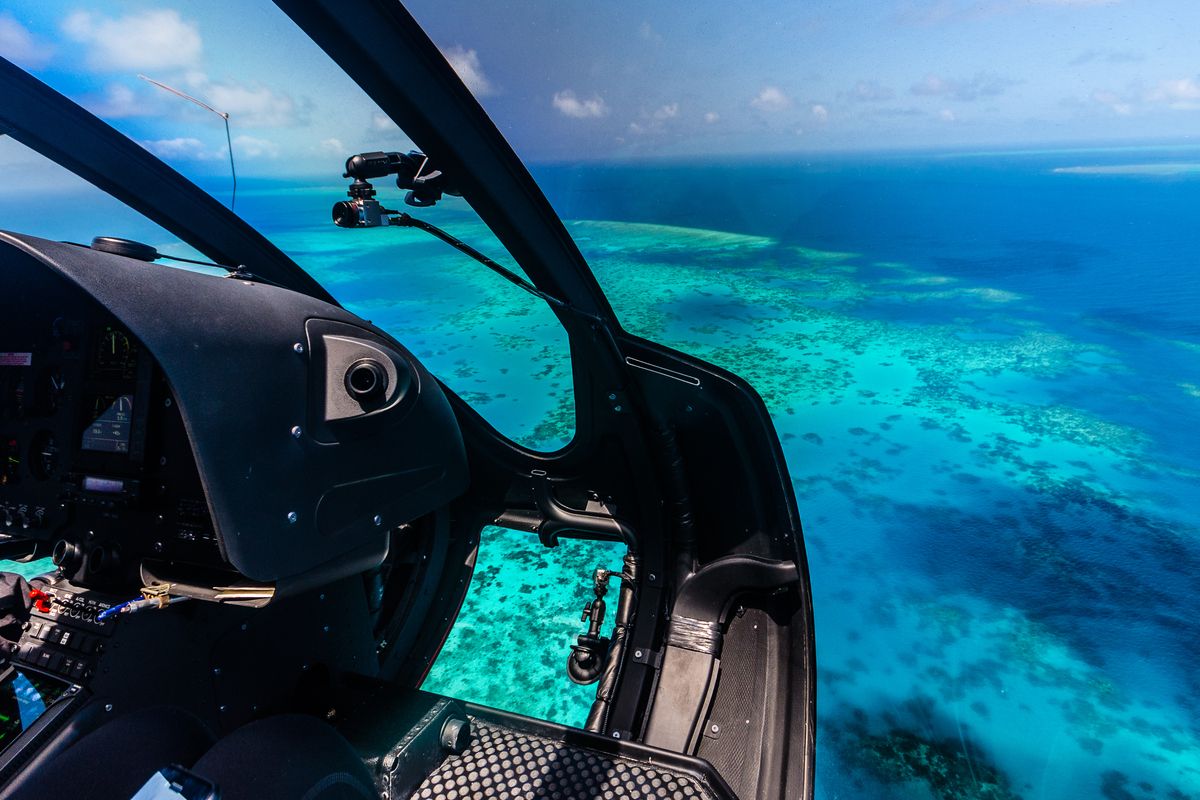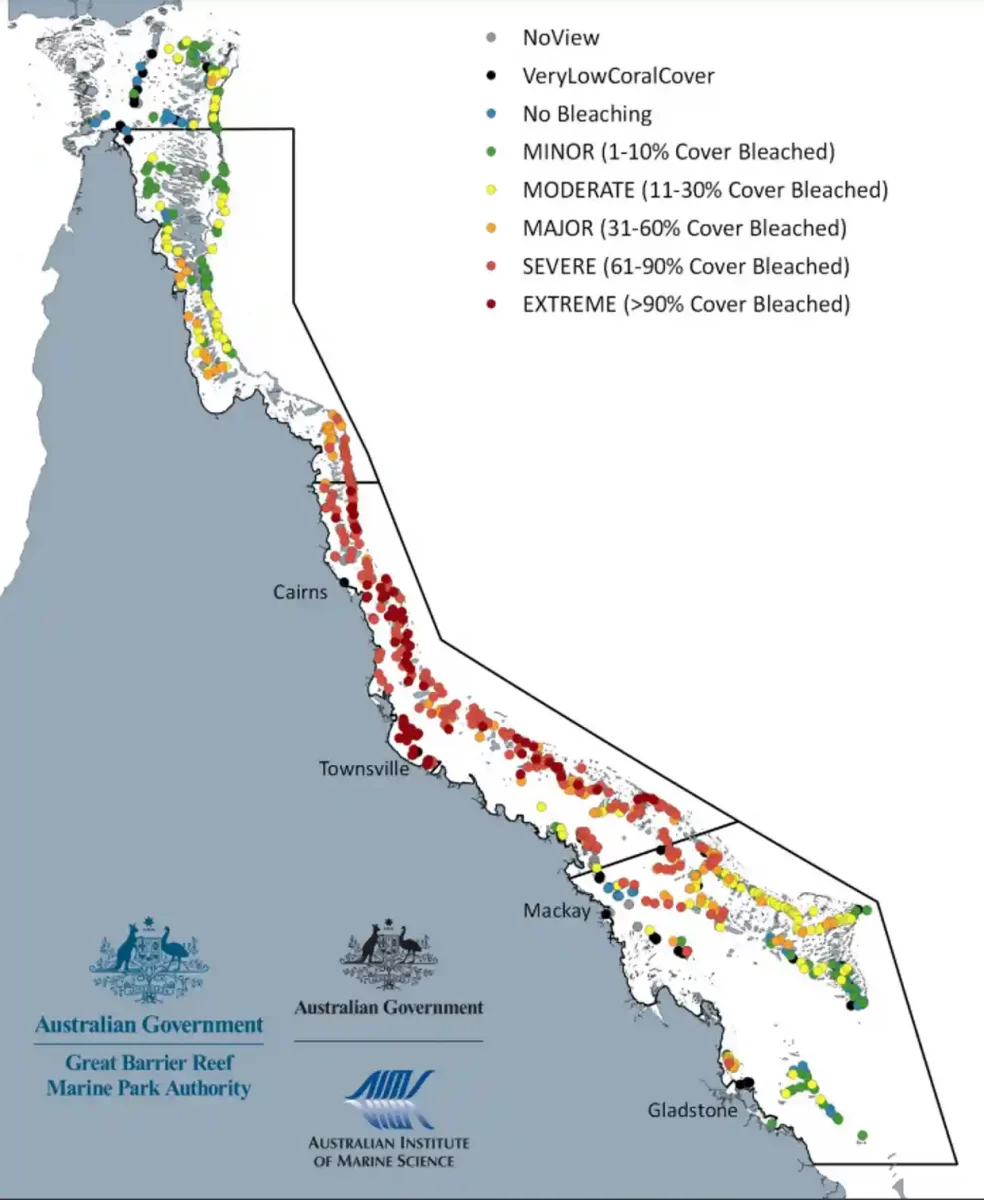
By DIVE Staff
The annual survey of the Great Barrier Reef has revealed that yet again the world’s largest coral structure has suffered extensive bleaching during the Australian summer of 2021/22.
The news is particularly bad as this year was a cooler La Niña year when scientists had hoped the reef might get a chance to recover from repeated bouts of bleaching.
Scientists at the Great Barrier Reef Marine Park Authority confirmed the unprecedented mass bleaching – this is the fourth such event in just seven years and the sixth since records began in 1998.
The snapshot survey was carried out by aerial surveillance after the final summer heatwave in March.

Simon Bradshaw, a researcher at the Climate Council, an Australia-based group that tracks climate change, said the report shows that the reef’s survival depends on steep global emission cuts within the decade.
‘This is heartbreaking. This is deeply troubling,’ he said. ‘It shows that our Barrier Reef really is in very serious trouble indeed.’
Most of the reefs surveyed recorded ‘severe bleaching’ which means at least 60 per cent of the coral has been hit.
Dr Neal Cantin, of the Australian Institute of Marine Science, flew over more than 1,800km of reefs and reported that between the Whitsunday islands and Cooktown he did not record any reef section as having escaped the bleaching.
Corals can recover from bleaching events. However, repeated events make this increasingly difficult.
This year bleaching has occurred along throughout the 2,300km reef system with the central belt between Cape Tribulation and the Whitsundays being the worst affected.


